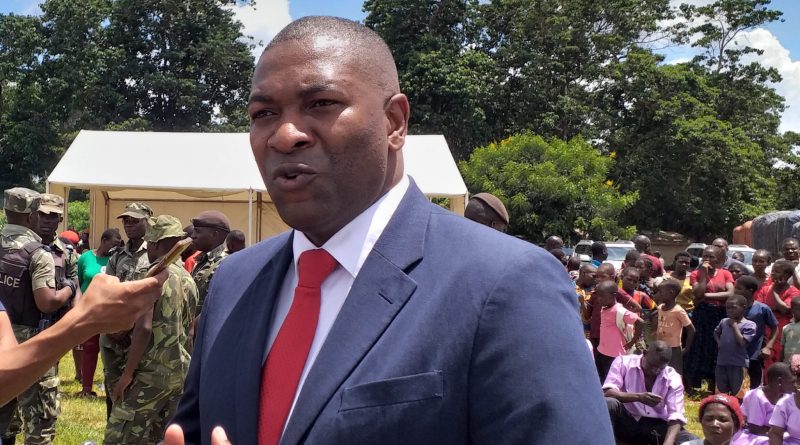Millions face hunger in Malawi
By Joseph Kayira
Malawi, being an agro-based economy, commercial farming remains sporadic, with rural farmers – largely on subsistence occupation – left to do much of the production. The situation to lure them into commercial farming has not been helped by a consistent lack of established structured market.
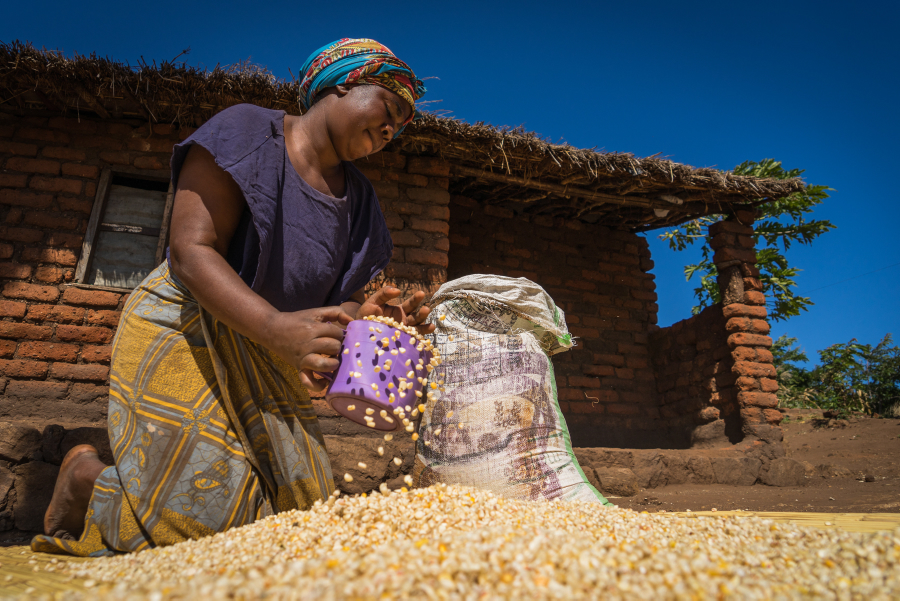
Maize has become a scarce commodity (Photo Credit: WFP)
Reeling from the effects of five major extreme weather events – drought and floods – over the last seven years, Malawi faces acute hunger and rising food prices. From the recent devastating Tropical Cyclone Freddy, a hemorrhaging economy, the worst cholera epidemic in decades, Malawians must brace for harder times as the price of the staple food – maize is rising – with a bag of 50 kilogrammes already hitting K40,000 and K50,000.
The Malawi Vulnerability Assessment Committee (MVAC) report, whose survey was conducted in June and July 2023, estimates that 4.4 million people will likely not be able to meet their annual food requirement during the 2023/2024 consumption period. This represents 22 per cent of the projected total population of 19.6 in this southern African nation, once regarded as a regional breadbasket.
Ministry of Agriculture statistics show that maize production has decreased by 5.6 percent in the 2022-2023 farming season. The country produced 3.5 million metric tonnes of maize, down from 3.7 metric tonnes during the preceding farming season. The ministry final Agriculture Production Estimates Survey indicates that maize production has declined due to reduced inputs uptake and use, reduced areas of cultivation and unfavourable weather conditions that induced floods – especially in southern Malawi.
Whatever the case, experts warn, the country needs to move with speed to bail out people who have been affected by hunger, largely in districts that were devastated by effects of Cyclone Freddy. In over 12 districts in southern Malawi, farmers were left in awe as floodwaters swept crops away and left bare, muddy fields behind. The storm hit just before farmers were about to harvest the maize crop. These are households that are in dire straits and need urgent food assistance.
Leader of Opposition in Parliament Kondwani Nankhumwa moved a motion to push government to buy relief maize and open the Agricultural Development and Marketing Corporation (ADMARC) depots across the country for vulnerable and affected households to have access to cheaper maize.
“If we are buying maize today at K40,000 what about in November? What shall happen in December? Shall the price not reach K100,000 or much more? This why I am saying that government should step in and immediately leap into action to cushion those who are suffering. Come forward and help those who cannot afford to buy the commodity at the exorbitant prices,” he said.
But Minister of Agriculture, Sam Kawale is upbeat about the situation. He says government will not sit back in time of need. Kawale says government will respond to the low maize production and threatening hunger through the 68,420 metric tonnes and 15,960 metric tonnes of maize, currently kept at state agencies – the National Food Reserve Agency (NFRA) and ADMARC respectively.
“The government will further procure about 42,000 metric tonnes of additional maize for NFRA using the K12 billion in the national budget [the contingency emergency response component] through the Agricultural Commercialisation Project and the African Risk Capacity Insurance payout funds,” he said.
Rising food prices, rationing maize
Earlier, Kawale ordered ADMARC to restrict maize sales to a maximum of 25 kilogrammes (kg) amid reports of hunger and shortage of the grain across the country.
“Government is rationing the maize because we are aware that there are vendors who are planning to buy the maize in bulk and resell it. So, each person will only be allowed to buy 25 kilogrammes,” Kawale said.
However, Silvester Namiwa, director for Centre for Democracy and Economic Development Initiatives (CDEDI) has embarked on a more radical approach to the hunger situation. He thinks government is taking Malawians for granted on maize and wants the minister of agriculture to lead a team of legislators, civil society, media and representation from concerned citizens to check if indeed the strategic grain reserves have maize in stock.
Kawale’s sentiments and insistence on rationing the maize, connotes NFRA and ADMARC have no maize, CDEDI observed. His message is crystal clear: let government come in the open and tell Malawians the truth about the maize situation.
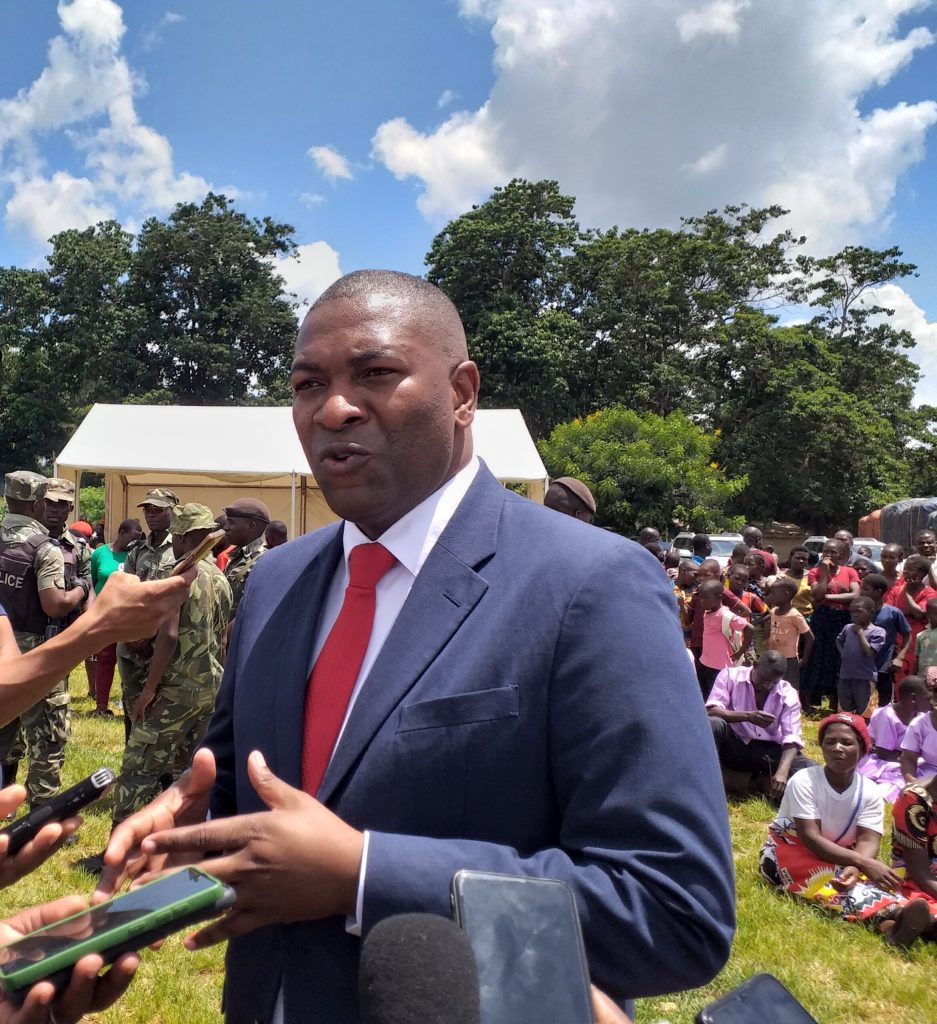
Kawale: Government is trying (Photo Credit: Internet)
“This is an admission that the situation is worse than projected. Secondly, the rationing will only worsen the situation on the ground as some selfish individuals will hijack the rationed maize. CDEDI is challenging Kawale to use the ballot box distribution model to flood the market with maize and in the process push down the prices and flush out those hoarding the staple food,” Namiwa said.
He is advocating for immediate release of maize onto the market to counter private traders and some individuals “who are deliberately hoarding the maize to create high demand and fetch more profits at the expense of the needy.”
Financially struggling ADMARC owed banks over K60 billion and had been seeking government bailout. The debts also left Admarc failing to play its role of stabilising maize prices and ensuring availability. Private grain traders and vendors have taken advantage of the situation – hoarding maize and demanding higher prices from consumers.
Government shutdown ADMARC last September and sent all its 4,000-plus staff on paid leave before formally retrenching all of them on January 31 2023. The move was set to put the struggling entity on a restructuring path.
President Lazarus Chakwera’s administration will have to put its house in order and speak with one voice on hunger. It will have to do more than just painting a rosy picture on hunger if warning from the Farming Early Farming Early Warning Systems Network (FEWS NET) are anything to go by.
It says most of southern Malawi is expected to face Crisis (IPC Phase 3) and Stressed (IPC Phase 2) outcomes through at least January, driven by below-normal agricultural production, rising food prices, and loss of assets caused by Tropical Cyclone Freddy.
FEWS NET said maize prices in Malawi have continued to trend higher than both the previous year and the five-year average. In most markets across the country, there was an increase in food prices from 5 to 50 percent between May and June. However, food prices in Mangochi, Balaka, and Phalombe [in southern Malawi] remained generally stable, and prices in Jenda and Mzuzu [in northern Malawi] declined by about 10 and 20 percent, respectively, following seasonal trends. Regardless of the month-on-month decline in Jenda and Mzuzu, maize prices remained high at K520 per kilogramme and K700 per kilogramme, respectively.
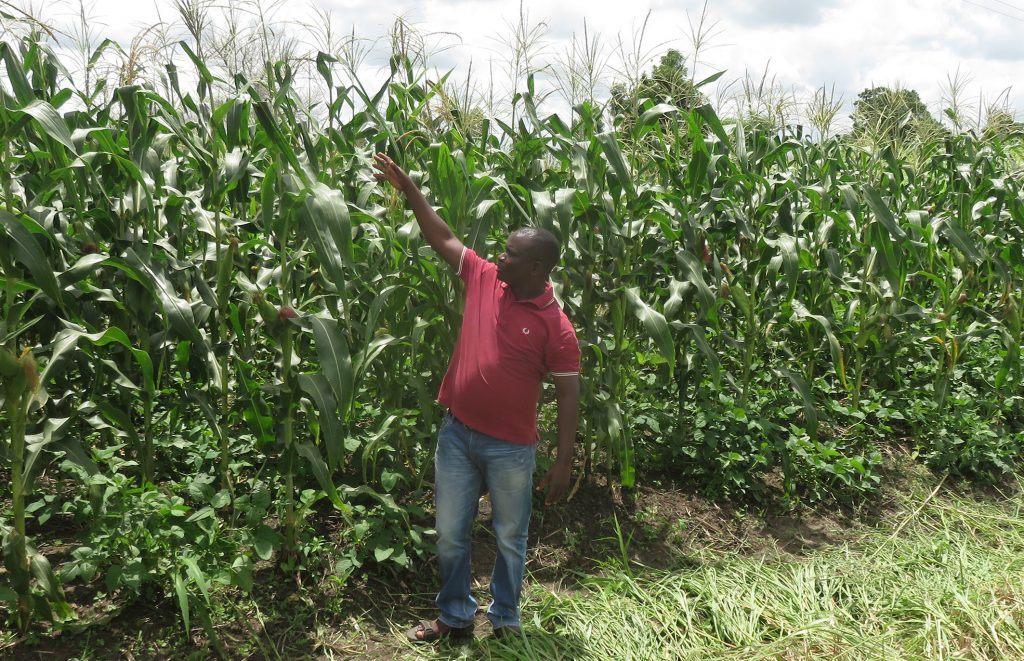
Maize field: Will households afford fertiliser this time around? (Photo Credit: Joseph Kayira)
“These prices are 55 to 250 percent higher than the previous year’s prices and 150 to 360 percent above the five-year average. Overall, high maize prices are have the most significant impact on poor households in southern Malawi, as they lost most of their own crops, which were ready for harvest, during Tropical Cyclone Freddy and have few sources of income with which to purchase food,” FEWS NET said.
Problematic agricultural policies
Centre for Social Concern (CFSC), says Malawi’s agricultural policies are also problematic: the country’s food supply is heavily reliant on maize, and efforts to diversify crops have been unsuccessful. Therefore, a majority of its population suffers when the crop production, especially maize production, fails.
Bernard Mphepo, CFSC’s programme officer on economic governance observed that Malawi is too poor to import organic materials to restore soil nutrients; and land is too scarce to allocate large plots of land to soil restoration.. Worse still, individual farmers cannot afford fertilizer for their land.
“Therefore, food production levels are also largely affected by declining soil fertility and land shortage. As rainfall patterns change and temperatures increase, the length of the productive growing season decreases and farmers must purchase more costly hybrid crops in order to obtain an adequate harvest,” Mphepo said.
The historical pattern suggests the likelihood of below-average harvests and increased acute food insecurity in the upcoming rainy seasons and the number of households facing the food crisis. These will be execerbated by high prices of inputs and climate changes. If this is not checked Malawi will have very slow economic growth and levels of poverty will increase, Mphepo warns.
“Agriculture subsidies though costly, are not as bad as perceived. The political inclination on the agriculture subsidy is what is ruining agriculture subsidies. Using the basics of economics, it is better to subsidize production than consumption. The current Affordable Input Programme (AIP) is marred by corruption and several maladministration issues. We need to rethink and find a way of how to efficiently and effectively subsidize our smallholder farmers who are in majority in the country. Focusing on commercial farmers will worsen levels of inequality,” he said.
Refocus, readjust, survive
Haunted by Covid ghosts, Ukrainian-Russia war ghosts and now the generalised global economic slowdown, Malawi needs to refocus its policies on the economy in general and agriculture in particular. Heavily dependent on tobacco sales for its forex, the country needs to find other ways of replenishing its foreign reserves. For instance, tobacco, the major export provides more than 60 percent of the foreign exchange earnings. Malawi uses proceeds from tobacco to import farm inputs such as fertilizer and chemicals. The Ukraine-Russia war has affected these key imports – a development that has led to skyrocketing prices of fertilisers.
Mphepo said “The war in Ukraine, Covid-19, and the generalized economic slowdown have contributed to hunger crisis and increase in cost of living. However the country has failed to respond to the crisis due to political reasons. There is no political will to invest in agriculture, no political will to fight corruption and no political will to deal with the hunger situation. This has worsened hunger and poverty in Malawi. For example, the country has deliberately decided not to buy maize to restock strategic gran reserves in preparation for impending hunger.”
FEWS NET said Malawi continues to face a foreign currency shortage, largely due to the country’s low sources of export revenue. The Reserve Bank of Malawi has reported that current foreign exchange reserves cover less than one month’s worth of imports, falling below the International Monetary Fund (IMF) threshold of a minimum of three months.
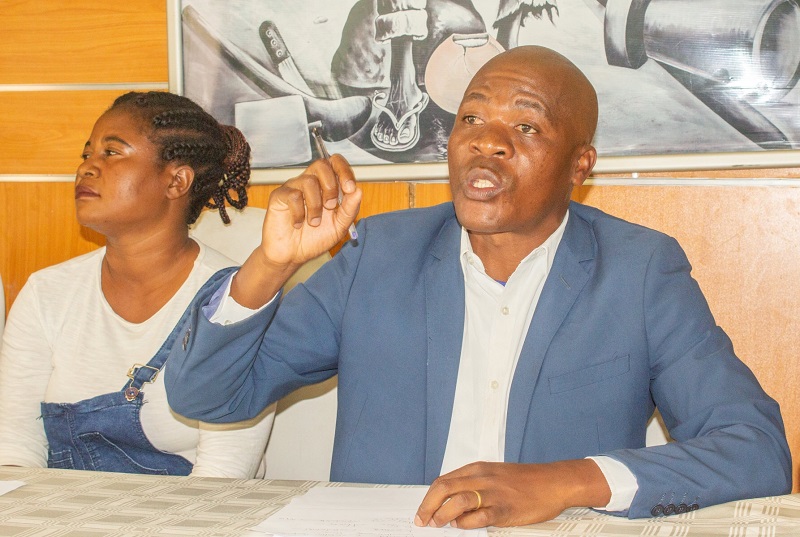
Government should not take Malawians for granted (Photo Credit: Internet)
“As of July, sales of tobacco – which is Malawi’s main export and accounts for more than 60 percent of Malawi’s foreign exchange earnings – stood at approximately 110,000 metric tonnes, representing a 30 percent increase compared to last year’s sales. The increase in sales volume was accompanied by an even higher increase in revenue from tobacco sales, which increased 42 percent compared to last year. Nevertheless, the increase has been insufficient to make up for Malawi’s persistent foreign exchange shortages. These shortages have led to elevated prices and a scarcity of imported goods, including fuel, adding more pressure on food prices and contributing to reduce access to food among purchase-dependent poor households,” the report added.
Civil Society Agriculture Network (CISANET), a grouping of civil society organizations working in the agriculture sector, said Malawi’s approach to enhancing food and nutrition security is more of a reactive than proactive.
“We seem to be moving one-step-forward, two-steps-backward “while we are fully aware that climate-related hazards that include Cyclone Freddy the floods coupled with an influx of pests and diseases might have been cited as some of the reasons to have affected the national yield this time around.”
“The reported 3.1 million figure of food-insecure Malawians in the rural areas coincides with almost the same number of households that government normally targets in its annual AIP that usually takes a huge chunk off the country’s national budget. It is a relief that the number is scaled down to1.75 million beneficiaries in this year’s national budget,” said Herbert Chagona, CISANET board chairperson.
For CISANET and others the pertinent question remains: Who is this initiative [AIP] really benefitting if government –having first moved to empower the rural households to enhance their own food and nutrition security – also has to always come back to the same households with food relief during the lean period?

